Figures & data
Table 1 Proportion of women included and excluded from the sample in each country
Table 2 Patient sociodemographic characteristics
Figure 1 The proportion of European women with at least one biological child who answered “yes” to the question, “Now please think of the pregnancy with your first child, was this a planned or unplanned pregnancy?”.
Abbreviations: EU, total Europe; AT, Austria; CZ, Czech Republic; DK, Denmark; FR, France; DE, Germany; GR, Greece; IT, Italy; NL, Netherlands; NO, Norway; PL, Poland; PT, Portugal; RU, Russia; ES, Spain; SE, Sweden; CH, Switzerland; TR, Turkey; UA, Ukraine; UK, United Kingdom; n, number.
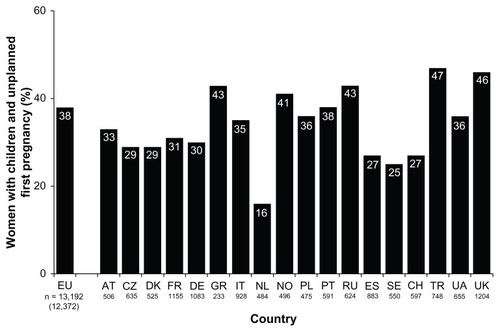
Figure 2 Among European women with biological children and who planned their first pregnancy, responses to the question, “When you were making plans to become pregnant with your first child, which of the following did you do?”.
Abbreviations: EU, total Europe; AT, Austria; CZ, Czech Republic; DK, Denmark; FR, France; DE, Germany; GR, Greece; IT, Italy; NL, Netherlands; NO, Norway; PL, Poland; PT, Portugal; RU, Russia; ES, Spain; SE, Sweden; CH, Switzerland; TR, Turkey; UA, Ukraine; UK, United Kingdom; n, number.
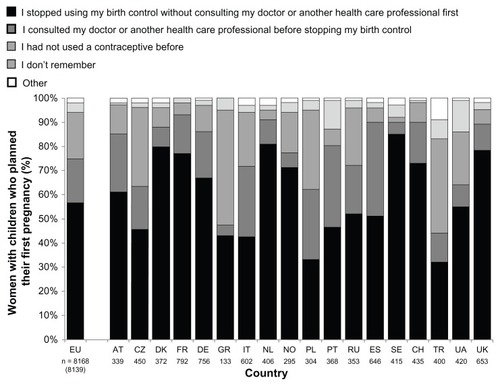
Figure 3 The proportion of European women who answered “yes” to the questions, “Have you heard of folic acid?” and “Do you know what the benefits of folic acid are?” and the proportion of women who identified neural tube defects/spina bifida when asked, “Which of the following diseases/birth defects can folic acid protect against?”.
Abbreviations: EU, total Europe; AT, Austria; CZ, Czech Republic; DK, Denmark; FR, France; DE, Germany; GR, Greece; IT, Italy; NL, Netherlands; NO, Norway; PL, Poland; PT, Portugal; RU, Russia; ES, Spain; SE, Sweden; CH, Switzerland; TR, Turkey; UA, Ukraine; UK, United Kingdom; n, number.
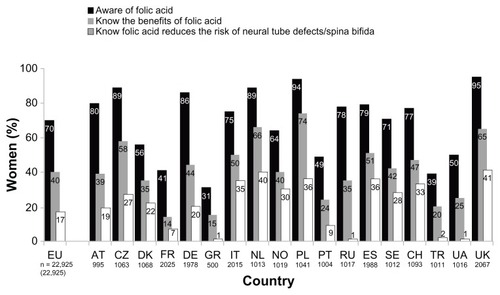
Figure 4 The proportion of European women who answered “yes” to the questions, “Have you ever heard of folic acid?” and “Do you know what the benefits of folic acid are?” and the proportion of women who identified neural tube defects/spina bifida when asked, “Which of the following diseases/birth defects can folic acid protect against?”.
Abbreviation: n, number.
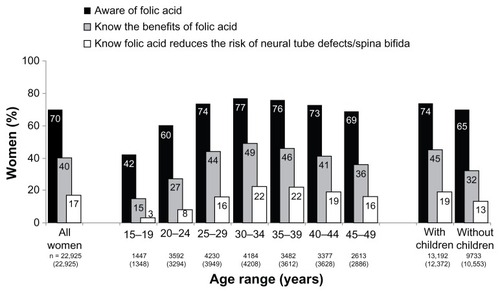
Figure 5 The proportion of European women taking folic acid at the time of the survey.
Abbreviation: n, number.
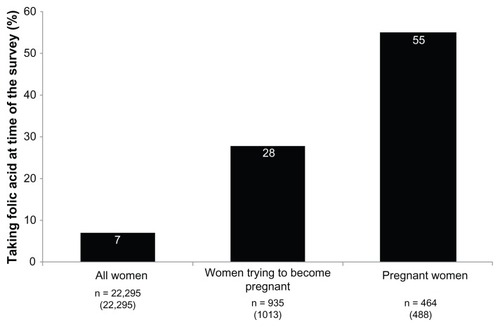
Figure 6 The proportion of European women with biological children and aware of FA who answered “yes” to the question, “Did you receive any advice/information to take folic acid either whilst you were pregnant or when you were thinking of becoming pregnant?” and “Again thinking of the pregnancy with your first child, did you take a folic acid supplement whilst you were pregnant or when you were trying to become pregnant for the first time?”
Abbreviations: FA, folic acid; n, number.
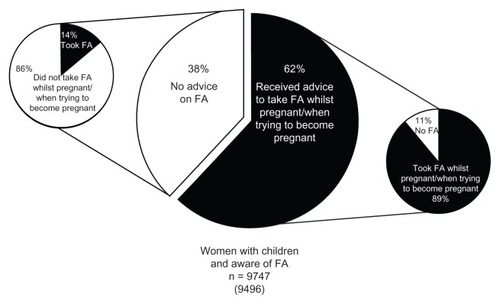
Table S1 Questionnaire